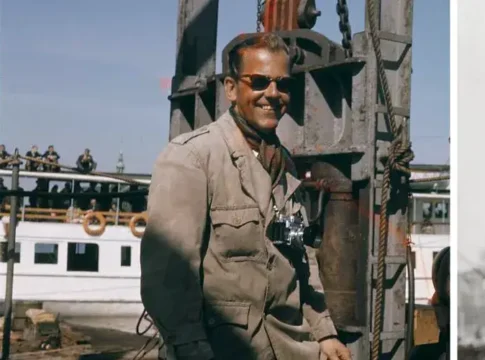 Photo: Susanlenox from España (PDM-owner)
Photo: Susanlenox from España (PDM-owner)
Ragnar Östberg:The Architect Who Shaped Stockholm’s Skyline
Ragnar Östberg (1866–1945) was one of Sweden’s most influential architects, best known for transforming Stockholm’s cityscape during the early 20th century. His most celebrated creation, the Stockholm City Hall (Stadshuset), remains a powerful symbol of Swedish identity and a landmark admired by visitors worldwide.
Early Life and Education
Born in Stockholm in 1866, Östberg began his career in a trading office before discovering his passion for art and architecture. He studied at the Royal Institute of Technology (KTH) and the Royal Swedish Academy of Arts, later traveling across Europe and the United States. These journeys exposed him to diverse styles—from Italian Renaissance palaces to American urban planning—that profoundly shaped his architectural vision.


Stockholm City Hall: Östberg’s Masterpiece
His crowning achievement, Stockholm City Hall, took 12 years to complete (1911–1923). The design became a national icon, blending influences into a unique synthesis:
- Renaissance-inspired courtyards and symmetry
- Nordic and Northern Gothic motifs
- Venetian touches in the waterside arcade
- Traditional Swedish brickwork and local craftsmanship
Its iconic 106-meter tower, topped with Sweden’s golden Three Crowns, still dominates the skyline. Today, Stadshuset remains both a functioning civic building and the venue of the Nobel Prize banquet.
Other Notable Works by Ragnar Östberg
Östberg’s architectural legacy extends well beyond City Hall. His diverse portfolio includes:
- Patent and Registration Office (1911–1921)
- Carl Eldh’s Studio (1918)
- Swedish History Museum (1938)
- Östra Real Secondary School (1906–1910)
- National Maritime Museum (1938)




Architectural Style and Influence
As a pioneer of the National Romantic movement, Östberg emphasized:
- Use of local materials and traditional Swedish craftsmanship
- Motifs inspired by medieval castles and historic Nordic forms
- Integration of fine art, sculpture, and architecture
Yet he also drew from international sources—Italian Renaissance, Baroque grandeur, and even Islamic patterns—blending them into a uniquely Scandinavian expression.
Legacy and Cultural Impact
Ragnar Östberg shaped more than Stockholm’s skyline—he helped define Sweden’s civic identity. His designs celebrated history while embracing modern function, creating spaces that remain relevant today. Stadshuset is not only an architectural marvel but a living cultural stage for both Swedes and international visitors.
Visiting Today
Visitors to Stockholm can experience Östberg’s legacy firsthand. Stockholm City Hall offers guided tours, revealing hidden chambers, mosaics, and banquet halls. Exploring his other works—from the Swedish History Museum to the Carl Eldh Studio—provides a deeper appreciation of how one architect helped shape a nation’s cultural soul.
[amazon_ads store=”sthlmmm-20″ asin1=”B0BN6HZ4JG” img1=”https://m.media-amazon.com/images/I/61IX47b4r9L._SL1449_.jpg” title1=”Stadshuset; en vägvisare, av Ragnar Östberg” asin2=”9187007029″ img2=”https://m.media-amazon.com/images/I/A15IaBBq51L._SL1500_.jpg” title2=”Secrets of the Walls: A Guide to Stockholm City Hall” asin3=”B00G3QCQTS” img3=”https://m.media-amazon.com/images/I/61UKTqvP55L._AC_SL1008_.jpg” title3=”Stockholm and City Hall – Vintage Travel Poster by Iwar Donner c.1936″]
Visit Info
![]() Ragnar Östberg
Ragnar Östberg



